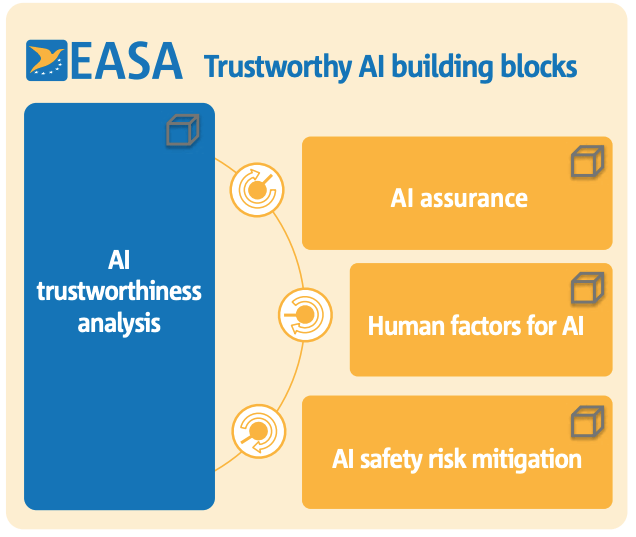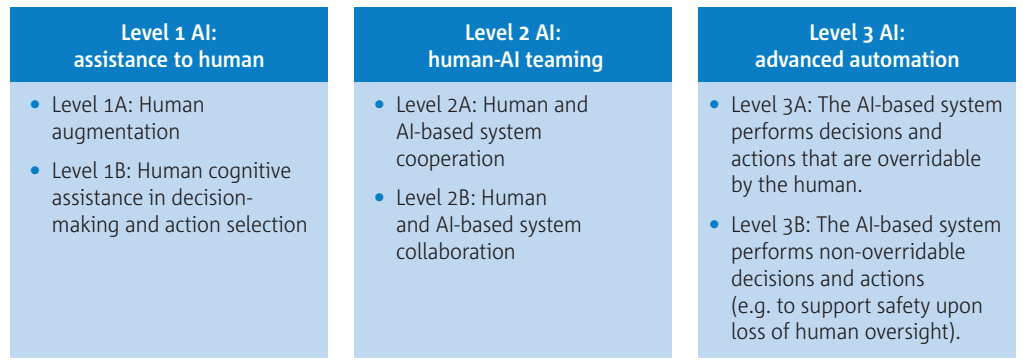BLOG POSTS
Revolutioninzing the Aviation Industry With AI
Table of Contents
The aviation industry has always been at the forefront of technological advancements, consistently pushing the boundaries of innovation. Over the years, we have witnessed remarkable progress in the field. However, one technology has recently taken center stage, promising to revolutionize the aviation industry like never before, artificial intelligence (AI).
Over the past three years, EASA has collaborated with all stakeholders in the aviation industry to achieve their goals. Their first two AI concept papers have paved the way for approving and implementing AI systems that enhance safety for end-users like pilots and air traffic controllers. These concepts are already being applied to certification projects through special conditions.
However, there are still important issues related to AI in aviation that need attention:
- Establishing public confidence in AI-enabled aviation products.
- Preparing for the certification and approval of advanced automation.
- Integrating ethical considerations, such as transparency and fairness, into oversight processes.
- Developing additional processes, methods, and standards to unlock AI’s potential for improving air transport safety.
EASA AI Roadmap: Building Blocks for AI trustworthiness Concept
The AI Trustworthiness Concept is a comprehensive framework designed to guide and ensure the reliability, safety, and ethical considerations of AI systems.
Four building blocks are identified as essential for establishing a framework for AI trustworthiness and enabling the readiness for AI use in aviation. All four building blocks constitute the backbone of the EASA AI roadmap.

BLOCK 1: AI trustworthiness analysis
The analysis of AI trustworthiness begins by characterizing the AI application and includes the evaluation of safety and security, which are crucial components of the trustworthiness analysis concept.In order to emphasize a significant aspect of the future EU regulations on AI, the analysis of AI trustworthiness addresses the level of “human oversight” in the AI application, taking into consideration the three levels of AI applications:

BLOCK 2: AI assurance concept
The AI assurance building block addresses guidance for AI-based systems. It includes learning assurance, which focuses on the shift from programming to learning in AI/ML, and development/post-ops explainability, which provides understandable information about how an AI/ML application produces its results. This block also involves data recording capabilities for continuous safety monitoring and incident investigation.BLOCK 3: Human factors for AI
The human factors for AI building block provides guidance to address the specific human factors requirements associated with the implementation of AI. One important aspect is AI operational explainability, which involves providing human end users with understandable, reliable, and relevant information about how an AI/ML application produces its results, at the appropriate level of detail and timing. Additionally, this block introduces the concept of human-AI teaming, which emphasizes the need for effective cooperation and collaboration between human end users and AI-based systems in order to achieve desired objectives.BLOCK 4: AI safety risk mitigation
The AI safety risk mitigation building block acknowledges that complete transparency of the “AI black box” may not always be feasible, and it recognizes the need to address the remaining risks associated with the inherent uncertainty of AI.AI-Enabled Innovations in Drones, U-space, and Air Mobility
The successful integration of manned and unmanned aircraft, ensuring safe airspace sharing and the implementation of advanced U-space services rely heavily on automation and disruptive technologies like AI/ML.
The early adoption of AI/ML solutions is crucial to enable complex drone operations in rapidly evolving environments with strict requirements, such as urban areas or congested control tower regions. These solutions can facilitate dynamic and swift responses, such as autonomous trajectory changes, in response to sudden operational environment changes like encounters or threats, or the need for dynamic airspace reconfiguration/restriction. AI/ML solutions play a critical role in ensuring the safe execution of drone operations, even in contingency or emergency situations. They can detect obstacles like cranes, predict icing conditions, and assess ground risks, such as the presence of the public at planned landing sites.
Efficient implementation of U-space, which deals with simultaneous operations of numerous drones in the same airspace volume, requires a departure from traditional approaches. AI/ML emerges as a key enabler to meet the performance requirements associated with U-space operations.
Specifically, AI/ML solutions serve as a technical prerequisite for:
- Detect and Avoid (DAA) systems, leveraging AI/ML capabilities to analyse data from radar or camera-based systems.
- Adaptive deconfliction, where AI/ML predicts the risk of encountering other aircraft along a flight path and adjusts the drones’ trajectory in advance to ensure continuous separation.
- Autonomous localization/navigation solutions that operate without relying solely on GPS. AI/ML techniques can enhance positioning sensors, data aggregation, and overall performance, simplifying and improving these functions.
AI in Aviation: Rules, Competency, Research, and Cybersecurity
While the integration of artificial intelligence (AI) in the aviation industry brings forth immense possibilities, it also presents additional challenges that need to be addressed. Beyond the framework of trustworthiness and safety, there are several areas that require attention and action.
Firstly, creating robust rules and regulations specific to AI implementation in aviation is crucial. As AI systems become more prevalent, it is essential to establish comprehensive guidelines that govern their usage, addressing aspects such as training, testing, and operational requirements. By developing clear and adaptable rules, the industry can ensure a standardized and safe approach to AI integration.
Secondly, enhancing staff competency is paramount. As AI becomes an integral part of aviation operations, professionals need to acquire the necessary skills and knowledge to interact effectively with AI systems. Training programs, workshops, and continuous education initiatives can equip aviation personnel with the expertise to leverage AI’s potential while maintaining situational awareness and critical decision-making abilities.
Additionally, research and development efforts must be intensified to keep pace with the evolving AI landscape. Ongoing exploration into advanced algorithms, machine learning techniques, and data analytics is crucial for unlocking new possibilities and refining existing AI applications in aviation. By investing in research, the industry can stay at the forefront of technological advancements and maximize the benefits of AI.
Moreover, cybersecurity considerations are paramount in an AI-driven aviation ecosystem. As AI systems become more interconnected and data-driven, protecting critical information and ensuring robust cybersecurity measures become imperative. By implementing robust cybersecurity protocols and regularly evaluating vulnerabilities, the aviation industry can safeguard against potential threats and maintain the integrity and resilience of AI systems.
In conclusion, while the integration of AI in aviation presents exciting prospects, it also demands attention to a range of challenges. By addressing issues such as rule creation, staff competency, research and development, and cybersecurity, the industry can navigate these challenges effectively and unlock the full potential of AI while ensuring safety, efficiency, and reliability in air transport. As stakeholders collaborate, innovate, and adapt, the aviation industry will continue to embrace AI as a transformative force, shaping the future of flight.